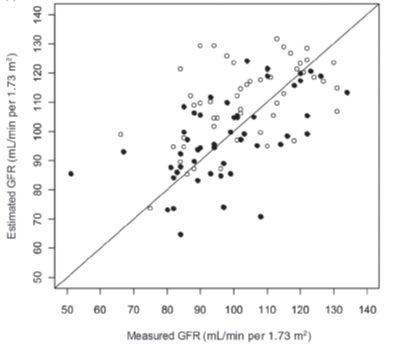Ways to estimate Asian kidney donors
LI Jialiang (Group Leader, Statistics and Applied Probability) () August 27, 201527 Aug 2015 NUS statisticians reported that Glomerular filtration rates (GFR) estimation using self-directed 24-hour urine creatinine clearance is less accurate than using CKD-EPI equation.
GFR is a calculation method which determines how well the blood is filtered by the kidneys, which is one way to measure the other kidney function. The Chronic Kidney Disease Collaboration – Epidemiology (CKD-EPI) GFR estimation equation is believed to estimate GFR more accurately in healthy people but this has not been validated in Asians.
A team led by Prof LI Jialiang from the Department of Statistics in NUS studied the distribution of GFR in a multi-ethnic Asian population without CKD. They compared this result with the measurement of GFR estimation, including the CKD-EPI equation, Cockroft-Gault equation, and 24-hour urine creatinine clearances. A total of 103 healthy volunteers without a history of kidney disease, hypertension, or diabetes underwent GFR measurement using 3-sample plasma clearance of (99m) Tc-DTPA. Cockroft-Gault estimated GFR and 24-hour urine creatinine clearances were normalized to body surface area. The mean measured GFR was 101 ± 15.8 mL/min per 1.73 m(2) and was lowest in Indians (93 ± 12.3 mL/min per 1.73 m(2); P < 0.001). The CKD-EPI equation appears to be more accurate for healthy participants. Estimated GFR correlated with measured GFR (r = 0.57, P < 0.001), and the mean difference is 3.72 ± 14.43 mL/min per 1.73 m(2) (P < 0.001). However, estimating GFR using self-directed 24-hour urine creatinine clearances is poorer than using the CKD-EPI equation.
Determining normal GFR is important clinically for the medical evaluation of potential kidney transplant donors. The distribution of GFR in a multi-ethnic Asian population without kidney disease in Singapore is unknown. The team aims to describe the distribution of normal GFR for the population in Singapore across age, gender, body size and ethnicity. Based on the study, GFR estimation using self-directed 24-hour urine collection for creatinine clearance is less accurate than using the CKD-EPI equation. A larger study is required to clarify GFR in healthy Asians, and the association of health outcomes of Asian kidney donors with lower GFR thresholds (see Figure).

Figure shows the comparison of measured and estimated glomerular filtration rates (GFR) in SKFS1 participants (r = 0.5666, P < 0.001). (•) Male; (∘) Female. [Image credit: Li Jialiang]
References
1. Teo BW, Xu H, Koh YY , Li J, Sinha AK, Shuter B, Sethi S, Lee EJC. “Estimating Kidney Function in a Multiethnic Asian Population with Multiple Filtration Markers.” American Journal of Kidney Disease. 60(3) (2012) 500.
2. Teo BW, Xu H, Koh YY, Li J, Subramanian S, Sinha AK, Shuter B, Toh QC, Sethi S, Lee EJC. “Glomerular filtration rates in healthy Asians without kidney disease.” Nephrology. 19 (2014) 72.


